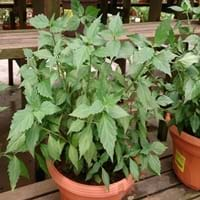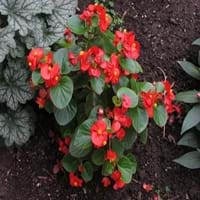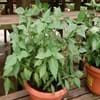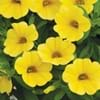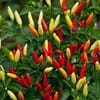Life Span
Perennial
Perennial
Type
Tender Perennial
Tender Perennial
Origin
South Africa
Hybrid origin
Types
Not Available
Ball Red, Bicola, Brandy, Derby
Number of Varieties
Not Available
Habitat
Floodplains, Forest margins, Grassland, Moist Ditches, Roadsides, Swamps, Tropical regions
Subtropical climates, Tropical Climate
USDA Hardiness Zone
9-15
10-15
Sunset Zone
H1, 14, 15, 16, 17, 18, 19, 20, 21, 22, 23, 24
H1, H2, 14, 15, 16, 17, 18, 19, 20, 21, 22, 23, 24
Habit
Clump-Forming
Clump-Forming
Flower Color
Yellow, Orange
Pink, Light Pink
Flower Color Modifier
Bicolor
Bicolor
Fruit Color
Black
Not Available
Leaf Color in Spring
Green
Red, Burgundy, Bronze
Leaf Color in Summer
Green
Red, Burgundy, Bronze
Leaf Color in Fall
Green
Red, Burgundy, Bronze
Leaf Color in Winter
Light Green
Light Green
Leaf Shape
Arrowhead
Ovate
Plant Season
Spring, Summer, Fall, Winter
Spring, Summer, Fall, Winter
Sunlight
Full Sun, Partial Sun
Full Sun, Partial Sun, Partial shade
Type of Soil
Loam, Sand
Clay, Loam, Sand
The pH of Soil
Neutral, Alkaline
Acidic, Neutral
Soil Drainage
Well drained
Well drained
Bloom Time
Spring, Late Spring, Early Summer, Summer, Late Summer, Early Fall, Fall
Indeterminate
Tolerances
Drought
Drought
Where to Plant?
Container, Ground, Pot
Container, Ground, Pot
How to Plant?
Seedlings, Stem Planting, Transplanting
Seedlings, stem tip cuttings
Plant Maintenance
Medium
Medium
Watering Requirements
Keep the ground moist but not water-logged, Never Over-water, Requires regular watering
Do Not over Water, Requires regular watering
In Summer
Lots of watering
Lots of watering
In Spring
Moderate
Moderate
In Winter
Average Water
Average Water
Soil pH
Neutral, Alkaline
Acidic, Neutral
Soil Type
Loam, Sand
Clay, Loam, Sand
Soil Drainage Capacity
Well drained
Well drained
Sun Exposure
Full Sun, Partial Sun
Full Sun, Partial Sun, Partial shade
Pruning
Remove deadheads
Cut back the foliage when the plants die back naturally
Fertilizers
All-Purpose Liquid Fertilizer
Balanced, soluble fertilizer
Pests and Diseases
Red blotch
Bacterial leaf spot, Blight, Powdery mildew, Stem rot
Plant Tolerance
Drought
Drought
Flower Petal Number
Single
Single
Foliage Texture
Fine
Medium
Foliage Sheen
Matte
Glossy
Attracts
Bees, Butterflies, Hummingbirds
Butterflies, Whiteflies
Allergy
Not Available
Diarrhea, salivation, Swelling in mouth, Vomiting
Aesthetic Uses
Not Used For Aesthetic Purpose
Borders, Mass in beds
Beauty Benefits
Not Available
Not Available
Environmental Uses
Air purification
Air purification
Medicinal Uses
Arthritis, Bladder Infection, Cough, Diabetes, Gout, Kidney problems, Oedema, Rheumatism, Urinary tract problems
No Medicinal Use
Part of Plant Used
Whole plant
Flowers, Leaves
Other Uses
Can be made into a herbal tea, Economic Purpose, Employed in herbal medicine
Used for mass plantings
Used As Indoor Plant
Yes
Yes
Used As Outdoor Plant
Yes
Yes
Garden Design
Bedding Plant, Container, Edging, Groundcover, Mixed Border, Rock Garden / Wall, Tropical
Bedding Plant, Container, Edging, Mixed Border, Tropical
Botanical Name
BULBINE frutescens
BEGONIA 'Senator Pink'
Common Name
Bulbine, Cat's Whiskers, Rankkopieva
Fibrous Begonia, Senator Pink Begonia, Wax Begonia
In Hindi
Not Available
Wax Begonia
In German
Katze Whiskers Pflanze
Wachs- Begonie
In French
Moustaches usine de Cat
Wax Begonia
In Spanish
Bigotes Planta de gato
Begonia de cera
In Greek
Μουστάκια γάτας Φυτών
Wax Begonia
In Portuguese
Bigodes Planta de Gato
Wax Begonia
In Polish
Kocie Wąsy rośliny
Wosk Begonia
In Latin
Cat Whiskers Planta
Cera Begonia
Phylum
Magnoliophyta
Magnoliophyta
Class
Magnoliopsida
Magnoliopsida
Order
Lamiales
Cucurbitales
Family
Liliaceae
Begoniaceae
Genus
Orthosiphon
Begonia
Clade
Angiosperms, Asterids, Eudicots
Angiosperms, Eudicots, Rosids
Tribe
Ocimeae
Not Available
Subfamily
Nepetoideae
Not Available
Number of Species
Not Available
Not Available
Season and Care of Cats Whiskers and Wax Begonia
Season and care of Cats Whiskers and Wax Begonia is important to know. While considering everything about Cats Whiskers and Wax Begonia Care, growing season is an essential factor. Cats Whiskers season is Spring, Summer, Fall and Winter and Wax Begonia season is Spring, Summer, Fall and Winter. The type of soil for Cats Whiskers is Loam, Sand and for Wax Begonia is Clay, Loam, Sand while the PH of soil for Cats Whiskers is Neutral, Alkaline and for Wax Begonia is Acidic, Neutral.
Cats Whiskers and Wax Begonia Physical Information
Cats Whiskers and Wax Begonia physical information is very important for comparison. Cats Whiskers height is 30.50 cm and width 61.00 cm whereas Wax Begonia height is 15.20 cm and width 15.20 cm. The color specification of Cats Whiskers and Wax Begonia are as follows:
Cats Whiskers flower color: Yellow and Orange
Cats Whiskers leaf color: Green
Wax Begonia flower color: Pink and Light Pink
- Wax Begonia leaf color: Red, Burgundy and Bronze
Care of Cats Whiskers and Wax Begonia
Care of Cats Whiskers and Wax Begonia include pruning, fertilizers, watering etc. Cats Whiskers pruning is done Remove deadheads and Wax Begonia pruning is done Cut back the foliage when the plants die back naturally. In summer Cats Whiskers needs Lots of watering and in winter, it needs Average Water. Whereas, in summer Wax Begonia needs Lots of watering and in winter, it needs Average Water.
